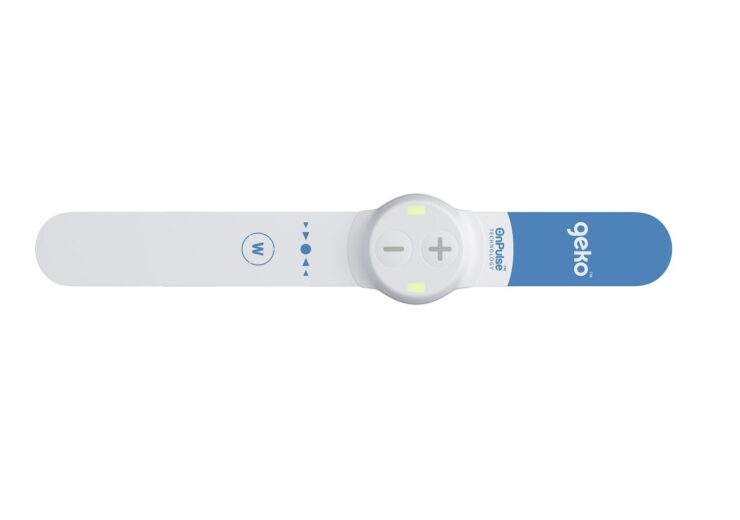The new geko device, a non-invasive wearable therapy device that treats venous insufficiency and ischemia by enhancing the microcirculatory blood flow in lower limb soft tissue, has been upgraded with an additional 3rd electrode (W3), while the previous version of the device (W2) had only two electrodes

The new geko device variant contains a third electrode. (Credit: Sky Medical Technology)
Sky Medical Technology has received the US Food and Drug Administration (FDA) 510(k) approval for its new-generation geko device to treat venous insufficiency and ischemia.
The current FDA approval follows an earlier approval for the previous-generation geko device granted last year, for the same indication.
The UK-based medical device maker has upgraded its new geko device with an additional 3rd electrode (W3), while the previous version of the device (W2) had only two electrodes.
In addition to enhancing nerve stimulation, patient comfort and superior outcomes, W3 provides two 12-hour therapeutic doses, while the W2 device offered two 6-hour doses.
Sky Medical Technology founder and CEO Bernard Ross said: “Achieving this latest 510(k) clearance for the geko device (W3) establishes Sky’s position as a leading innovator in MedTech dedicated to improving patient outcomes.
“Conditions such as venous insufficiency and ischemia are therapy areas sorely in need of innovation, and we are pleased to contribute to improvements in this care pathway that make recovery quicker, simpler and more comfortable.”
The geko device is a non-invasive wearable therapy device that treats venous insufficiency and ischemia by enhancing the microcirculatory blood flow in lower limb soft tissue.
Designed to be in size of a wristwatch, the disposable device is worn near the knee, which gently stimulates the common peroneal nerve activating the calf and foot muscle pumps.
It results in increased blood flow in the deep veins of the calf, operates without external pressure to the leg, and facilitates complete mobility, said the company.
In three recently published studies, the geko device has increased microcirculatory blood flow in the lower limbs of patients with venous insufficiency and ischemia.
The studies measured the increase using Laser Speckle Contrast Imaging, a non-invasive technique that measures blood flow.
Venous insufficiency and ischemia are caused due to reduced blood flow in the veins and arteries, and may lead to lower extremity oedema, skin changes and discomfort.
The disease can progress to chronic venous insufficiency (CVI), a serious condition characterised by decline in quality of life and loss of work productivity.
If left untreated, progression of venous insufficiency and ischemia to CVI may lead to post-phlebitic syndrome and venous leg ulcers.
